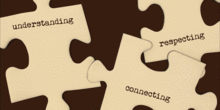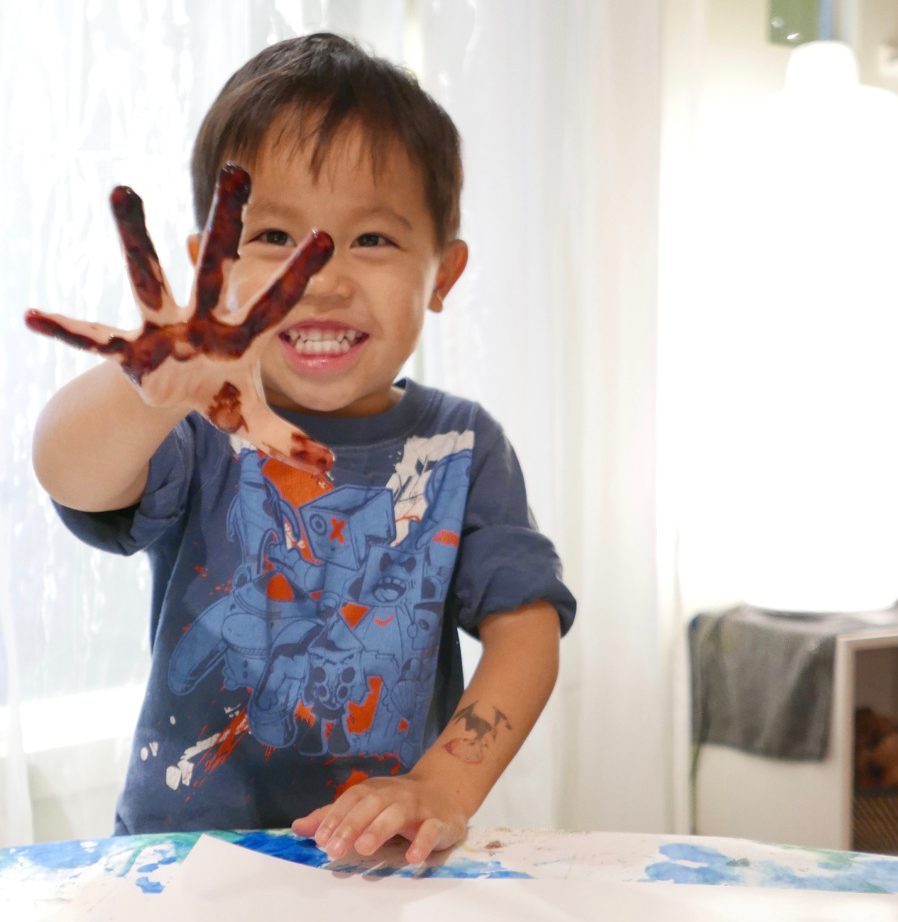
Hilltop’s Anti-Bias Booklist
[et_pb_section bb_built=”1″][et_pb_row][et_pb_column type=”4_4″][et_pb_text _builder_version=”3.17.1″]
In late fall of 2013, I was trying to appear calm and collected via Skype, my laptop resting precariously on a cardboard box, in order to impress the Hilltop hiring panel that was interviewing me. For the most part, I was feeling confident and qualified. Then they asked the question “How familiar are you with anti-bias education?”
I knew that anti-bias education played a critical role in Hilltop’s curriculum and that was one of the aspects that drew me to apply in the first place. However, I personally didn’t have any experience with intentionally implementing anything like that. I couldn’t lie, so I stammered out something as honest and coherent as possible. Fortunately, the panel still saw me as the best fit and I was offered the job as an educator at Hilltop. Since then, I have taken advantage of every opportunity to learn more, expand my anti-bias practice, and understand my own identity, biases, and place in this culture of ours.
As an educator and bookworm, one of the resources I have looked to the most when strengthening my anti-bias curriculum is children’s literature. I began seeking out lists of recommended titles leading to ever more lengthy lists of books on hold at the library. Suddenly, I was lugging 10…15…20+ books at a time into the classroom. Some became loved stories that we read over and over. Some sparked questions and great conversations with children and their families. Some were board books meant for much younger children. Some were chapter books meant for much older children. Some tackled one stereotype while re-enforcing another. Some were confusing/boring/too long/too simple/too complex…
 I began to fantasize about a book list that would be even just a bit more helpful. It would include a summary and some guidance about the topics it covered. It would tell me about what was wonderful in the book and give a heads up on things that could be problematic or stumbling blocks. Maybe it would even have questions I could consider beforehand or helpful language to get me started. Basically, it would help me, as a grownup, feel more prepared and confident and, therefore, much much more likely to actually read these books with children, and have the meaningful and purposeful conversations I wanted to have with them.
I began to fantasize about a book list that would be even just a bit more helpful. It would include a summary and some guidance about the topics it covered. It would tell me about what was wonderful in the book and give a heads up on things that could be problematic or stumbling blocks. Maybe it would even have questions I could consider beforehand or helpful language to get me started. Basically, it would help me, as a grownup, feel more prepared and confident and, therefore, much much more likely to actually read these books with children, and have the meaningful and purposeful conversations I wanted to have with them.
So, being lucky enough to work at a school, and with a team, that would support me with time, ideas, and encouragement, I went about making this fantasy list. It would not have happened without:
- the Seattle Public Library system – for the books, the book summaries, and the amazing in-person help
- the kids in my class!
- fellow teachers and other adults who recommended books, edited this piece, contributed their thoughts, and helped organized the list (Huge thank you to Hilltop educator Layla Rowen for her help!)
Most of the titles are accompanied by a “pro” section and a “to consider” section. This is meant to give you, the reader, a head start. My hope is that the “pro” section will help you choose books that are relevant to you and your child and give you a bit of a baseline for what to expect. The “to consider” section is meant to keep you from being blindsided. Reading this section can help you prepare for any in-reading revisions you may want to make, and/or prepare questions/comments to call out what may still be inaccurate representations. For example:
- I recommend changing up a sentence in Mr. Seahorse by Eric Carle in which a father fish is telling Mr. Seahorse that he is babysitting (vs. parenting) his own children.
- A Mother for Choco is a sweet story about adoption, but all the potential families are represented by a solo Mrs. – it would be good to be ready to talk about and have books available about all the different kinds of families who adopt children.
 If there isn’t anything included in either the “pro” or the “to consider” section, it doesn’t mean it’s a perfect book, it just means that we don’t yet have any significant suggestions to add for that book. Most of these books are recommended for children ages 3-5. I have made note if a specific book is more appropriate for a different age range.
If there isn’t anything included in either the “pro” or the “to consider” section, it doesn’t mean it’s a perfect book, it just means that we don’t yet have any significant suggestions to add for that book. Most of these books are recommended for children ages 3-5. I have made note if a specific book is more appropriate for a different age range.
Below are descriptions of a few of the themes used to describe the big ideas in the books we’ve listed so far. While this isn’t acomprehensive list of possible categories, it should help give an idea of whether a particular book will be relevant. For example, if you are looking for books that tackle gender norms, then it could be helpful to search the list for that identifier. I have also highlighted when a book has themes related to literacy, math, science, and history. As you go through, please keep in mind that this is an imperfect list, of imperfect books, compiled by imperfect people, in a specific western cultural context. We come to anti-bias work with humility, curiosity, and open-mindedness and we know that we will make mistakes.
Window/mirror: In an anti-bias curriculum, books are very helpful windows for children to peek through and see someone else’s experience as well as mirrors that reflect their own experience back to them. In this list, I am using this designation when a book highlights multiple forces that impact a person or situation. For example, Pablo’s Tree is about a little boy who is adopted. He is also Mexican American and adopted into a single parent home and is often taken care of by his grandfather. Any one of those would be things that I might look for in a book for my anti-bias collection. Having all three components in one story means that I am offering a deeper and wider reflection of the many ways people live. For example, I can offer dozens of books that depict adoption, but it’s not very helpful or accurate if all the families in those books look the same.
I have also used this designation when the story is just a story but it features a historically marginalized group. In Not Yet, Yvette, for instance, a little girl and her dad get things ready for a surprise birthday party for her mom. This is a sweet story about a Black family that isn’t centered around their race, and instead highlights a common and relatable experience.
Cultural/global: Highlights an aspect of a culture outside of the dominant one. No single book will be able to fully represent the concepts, diversity, or history of any given culture. Do a bit of research on any terms that you are unfamiliar or uncomfortable with.
Gender norms: Characters are either grappling with not fitting with the social norms for their gender (like a little boy who wants to learn to dance ballet), or the characters and story are written in a way that falls outside of socialized gender norms (a little girl learning how to be a scientist).
Ageism: This designation is used to indicate when an older person is featured in the story in an empowering way.
Activism/Action: In the story, a person or a group stands up for themselves or for others.
Finally, here are some tips when looking for a book, and some questions you may want to ask yourself:
- How can I help a child find connections and similarities with the characters in the story?
- How can I introduce this book to children, to draw their attention?
- What is the author’s connection to the material?
- What stereotypes are being challenged? What stereotypes are being reinforced?
- What do I (and the child I’m sharing this with) already know or think about this topic?
- How are the other characters, not just the main characters, portrayed?
- Am I showing and highlighting a range of experiences?
(One of my students once told me she didn’t really like stories with brown people because the stories were sad – definitely a punch to the gut and a huge reminder not to leave out the social/emotional learning opportunities we should take advantage of with every book.)
I recommend that you get yourself to the library, and ask a librarian for help. Yes, there might be some uncomfortable feelings on your part when you ask for a counting book that features a child of color, or a holiday book featuring same-sex parents, but I have always found librarians to be enthusiastic and deeply knowledgeable about what’s out there.
This list includes books that have been read and loved in our classrooms. It will forever be in the works as we find titles to include or remove. If you have a beloved book to recommend or if you have questions about this list or the books on it, please email me at chelsea.myers@hilltopcc.org
To access and use the booklist, visit: Hilltop.libib.com.
Select ‘Anti-Bias Children’s Books.’
Then, to search by theme, go to Tag List.
[/et_pb_text][/et_pb_column][/et_pb_row][/et_pb_section]